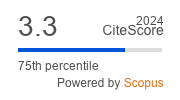Article | Open Access
Patterns of Co‐Residential Relationships Across Cohorts in Post‐Socialist Countries: Less Time for Childbearing?
| Views: | 2491 | | | Downloads: | 1219 |
Abstract: Co‐residential partnerships are a pre‐condition for childbearing and less time is spent in these unions when there is difficulty finding partners, a delay in union formation, and partnership instability. Our study explores patterns in co‐residential partnerships across birth cohorts in 11 post‐socialist countries to assess changes in the number of years spent in these partnerships and the patterns underlying any trend. Using the Harmonized Histories dataset, based on partnership data from generations and gender surveys, we calculate changes in co‐residential union trends. In about half of the countries, the share of women who have not entered a co‐residential union by age 30 increased, whereas the proportion still in their first union by this age decreased universally. The latter trend, reflecting union instability, pre‐dates the transition from socialism. Delays in starting the first union were seen in only a few countries immediately after the transition began but more countries experienced union postponement in coming‐of‐age cohorts in the 2000s. A declining median age at first union in the former Soviet republics before and immediately after the transition from socialism balances the impact of increased union instability. Overall, the number of years spent in a co‐residential union before age 30 declined across the Central and South‐Eastern European countries, especially in Hungary. Union dynamics may have contributed to declining fertility in these countries. In contrast, little or no change in time spent in unions in the post‐Soviet countries indicates that union dynamics were less likely to have influenced these women’s fertility behavior.
Keywords: co‐residential union; fertility; partnership instability; post‐socialist countries; union formation postponement
Supplementary Files:
Published:
© Sunnee Billingsley, Livia Oláh. This is an open access article distributed under the terms of the Creative Commons Attribution 4.0 license (http://creativecommons.org/licenses/by/4.0), which permits any use, distribution, and reproduction of the work without further permission provided the original author(s) and source are credited.


